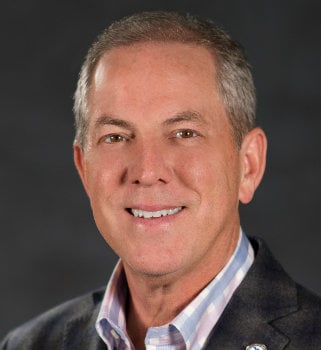As we age personally and professionally, I think we all ask the question, “If I had it to do all over again, what would I change?”
As a 60-year-old white male executive, one thing that I would have done more effectively is mentor both men and women within my sphere of influence. Now, like with any introspective assessment, I have to say that I haven’t failed, I just could have done better. But despite my shortcomings in this area, I can bring awareness to the topic and use my remaining years to make a meaningful difference.
A good friend of mine, who happens to be a hard-driving, tenacious young leader helped me to see one of my flaws. She never referred to me. She just described her journey and perspective and unfortunately, in far too many ways, I saw myself in her examples of male ignorance in the area of mentoring. As she pointed out, as a woman, she noticed that when power lunches or small golf outings were organized, the guys often seemed to exclude women. These men didn’t mean to be exclusive, but they migrated to the “good old boy” outings as opposed to being inclusive.
As subtle as her examples were, I realized, much to my dismay, that I had been guilty of some of those practices. Whether it was filling a golf foursome, scheduling lunch meetings or while attending after-hour cocktail events or dinner meetings, I often favored male team members. What was once an unconscious action has become very clear. Now I look for opportunities of inclusivity in these types of social settings. And of course, this occurs with all affinity groups such as female executives, young professionals, certain specialized employees, or demographic groups.
The message is this: inclusive mentoring is not just a gender issue; it should be required of all executives and apply to all types of diversity.
The “why” behind inclusive mentoring is obvious but I’ll overstate it nonetheless. The majority of credit union employees and management staff are women. A significant majority of small and mid-size credit unions is run by women. Much to my delight, in Michigan, some of our largest and most progressive credit unions are now led by women. Michigan’s largest credit union, Lake Michigan, is led by Sandy Jelinski, an incredible leader, and 4 of our 10 largest have a woman at the helm. That’s progress in that we’re seeing more diversity in the largest credit unions in our industry. For state leagues, the two largest are now run by exceptional female leaders: Diana Dykstra at the California/Nevada Leagues and Caroline Willard at the Cornerstone League. And organizations like NASCUS, NCUA and others have had women leaders at the helm.
But for all leaders of credit unions and credit union organizations, we need to work harder to institutionalize inclusion in board rooms, executive teams and individual departments.
It’s well known that in corporate America, 95 percent of the Fortune 500 companies are led by men. General Motors’ CEO Mary Barra is an exception to this trend. In a male-dominated auto industry, she has overseen one of the most remarkable corporate turnarounds in U.S. history. Mrs. Barra is an incredibly respected leader who has fought her way through the power structure to achieve the top status at GM.As a former HR executive at GM, Barra brought amazing insight and the power of simplicity to the company’s dress code by reducing it to two words, “dress appropriately.” Diversity challenges the status quo and brings fresh perspective that drives innovation and culture enhancements.
In his book, “Why Women? - The Leadership Imperative to Advancing Women and Engaging Men”, author Jeffery Tobias Halter suggests that, “engaging men as champions and advocates who recognize the value of women is the cornerstone of organizational success. They must be leaders who get it and walk the talk every day in their actions and communications."
My mother raised me and my three brothers alone after my father died in a small plane crash in 1961. She had only a high school education and worked mostly minimum wage jobs. She faced discrimination and sexual harassment in the small company she worked for. She was and is the toughest person I have ever known. What she taught me was tremendous respect for the unique attributes of female leaders.
Let’s face it, we are different. And it is precisely those differences that should require us to seek gender and ethnic diversity at all levels of our organizations and an absence of discrimination of any kind. Creating and fostering a culture of inclusion and respect, along with zero tolerance for discrimination is critical for any company’s brand and effectiveness.
This is especially true for credit unions and financial institutions. According to She-conomy.com, women account for 85 percent of all consumer purchases spanning everything from groceries and home improvements to automobiles and health care. That number is 89 percent for banking services.
So, whether the credit union is focused on visioning, product development, marketing, or omni-channel member experience, having women’s leadership and operational perspectives is simply critical. We all need to do better in accepting the need for diversity and mentoring tomorrow’s leaders.
I suggest that there are five things that every male and female executive should consider as a self-assessment and resolve to broaden awareness, and be more inclusive in mentoring, especially as it relates to gender inclusion.
First, get rid of the excuses.
Consciously or subconsciously, we all have our excuses for maintaining the status quo. Get rid of them. This is not going to create a culture of reverse discrimination. It is about inclusion and giving everyone a fair shot. And no matter how good you think you or your organization are doing, you can and should do better. Gender and ethnic diversity bring more innovation and creativity and greater alignment with the members you serve. It also strengthens your corporate brand internally and externally. And, it’s the right thing to do.
Second, do an honest inventory of your behavior.
Every executive should do a complete self-assessment. It isn’t enough to be tolerant or to not discriminate. Take a look at your unconscious bias. The real question is, do you look for opportunities to proactively mentor both men and women in your organization? And, do you do so with equal favor to men and women? Get rid of all exclusionary tendencies that favor men or women. Realize that you have a responsibility to mentor equally and fairly.
Third, conduct an objective review of your organization’s practices with regard to gender inclusion and pay equity.
After attending a National CU Roundtable meeting where gender inclusion was showcased, I came back to the office and asked my chief culture officer to give me an objective assessment of our gender pay equity as well as ethnic and gender diversity for our 150 employees. I was pleased to learn that we have a relatively balanced organization. We have a 65 percent female to male ratio and on a pay equity basis, our female team members are slightly better compensated on both base and total compensation than their male counterparts. We are examining opportunities to continue broadening our ethnic diversities to better represent our national market, and we would like to see continued growth in female and ethnic representation in our senior positions. I also believe that we need more formality for sensitivity training regarding sexual harassment, discrimination, mentoring and gender/ethnic inclusion.
But the journey of a thousand miles begins with a good objective assessment where opportunities can be identified.
Fourth, resolve to change with very specific activities for yourself and your organization.
This one is the toughest. We all are creatures of habit and we have to want to be better and to do better. For my part, I have resolved to make sure that at all levels of the organization do these things: We need more awareness at all levels of the need to broaden applicant pools to include gender and ethnic diversity. And where there is an imbalance, the tie should go in the direction of creating necessary diversity.
In other areas of potential discrimination, including those protected by law, managers at all levels need to hear from the CEO that the company’s culture has a zero tolerance for discrimination of any kind, and the CEO has to lead by example. And, all managers need to be encouraged by the CEO to mentor in an inclusive way, and open dialogue with team members can help with this.
All leaders, both men and women, need to be better listeners, especially on this topic of understanding where women face barriers to communication and advancement.
At Michigan Credit Union League (MCUL) and CU Solutions Group (CUSG), we recently introduced a book called, “Daring Greatly”, written by Brene Brown into our office culture. It encourages vulnerability and more empathetic listening at all levels. Tools like this are helpful, and send the right message to the whole team.
Fifth, rid your organization of discrimination of any kind and foster inclusion at all levels.
Our next step at CUSG and MCUL is to review department by department to see if, in some cases, we might have swung too far in one direction. If a department is almost entirely female or a certain demographic group, it might be time to diversify. Again, hiring should always be about hiring the most qualified person, but without discrimination of any kind. I also want to do a better job of creating awareness and expanding training so that all of our leaders and team members understand the “why” behind gender and ethnic inclusion and not just the legal side to it.
CUSG is proud to serve credit unions with products in areas of technology, marketing and performance solutions like Performance Pro and Compease. In the case of Compease, in addition to providing an efficient and effective means of establishing wage and salary ranges and managing compensation, this tool can help with pay equity decisions on a position-by-position basis. Great companies like Google are doing this as a commitment to pay equity, and Compease is a great tool for making this easy.
CUSG has also long offered HR consulting services and is now expanding into a suite of strategic advisory services led by SVP Brandi Stankovic. We look forward to working with credit unions and credit union organizations to help them establish HR practices that enhance the culture and provide a platform for attracting and retaining the talent needed for the future.
Brandi and her team can help do the assessment of pay equity and hiring practices, and provide board level awareness, strategic discussions, and improve open dialogue and commitment to the leadership imperative for advancing women and engaging men.
Progressive credit unions of all sizes need to position themselves to attract, retain and develop the workforce of the future. Diversity and the leadership mentoring that helps achieve this in leadership positions will be critical success drivers.







